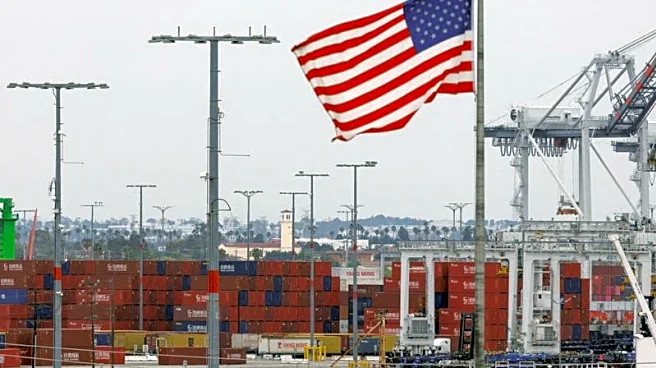What's Happening?
Inflation in the United States is exacerbating the economic divide between higher and lower-income households. Recent data from the Census Bureau indicates that inflation-adjusted household income rose only for the highest earners, while those in lower and middle-income brackets saw no significant changes. The rising prices are partly attributed to President Trump's import tariffs, which businesses are beginning to pass on to consumers. This has led to increased costs for everyday goods, such as groceries and clothing, affecting lower-income households more severely. Economists suggest that tariffs on imports, particularly from China, are disproportionately impacting lower-priced goods, which are more commonly purchased by lower-income families.
Why It's Important?
The impact of inflation driven by tariffs is significant as it highlights the growing economic disparity in the U.S. Lower-income households, which spend a larger portion of their budget on imports, are more vulnerable to price increases. This situation could lead to increased financial strain on these families, potentially affecting their ability to afford basic necessities. The divide is also evident in consumer behavior, with higher-income individuals continuing to spend freely while others face financial pressure. This economic bifurcation could influence public policy discussions on tariffs and economic support measures for affected groups.
What's Next?
As inflation continues to affect consumer prices, businesses may further adjust their pricing strategies to accommodate changing consumer behavior. Companies like McDonald's are expanding their value menus to attract price-conscious customers. Policymakers might face pressure to address the economic divide and consider adjustments to tariff policies or introduce measures to support lower-income households. The ongoing debate over the long-term effects of tariffs on inflation and consumer prices is likely to persist.












